
views
X
Research source
The terms that describe sake can seem overwhelming at first, so you may be wondering where to begin. With some handy tips to guide you, selecting a type of sake and deciding on where to buy it can be interesting and fun. Enjoy sampling various sakes and find out which brands and flavors appeal to you the most!
Purchasing Sake

Read sake reviews and descriptions. There is a huge online fascination with sake. You can find sake appreciation clubs as well as online reviews of different brands all over the net. Look for clear and informative descriptions of specific sakes' characteristics.

Go to a Japanese restaurant or sushi bar. If you try a sake that you like, ask who the distributor is. Get in touch with the distributor and ask where you can buy their sake locally.

Know that pricing usually reflects quality. The old adage “you get what you pay for” applies to sake more often than not. The majority of sake is priced fairly. Costly sake is usually produced using more labor-intensive techniques.

Check liquor stores. Although they may not have an extensive range of sake, it's not a bad place to start. Call local liquor stores first and ask if they stock sake. Look for a store that refrigerates their sakes and keeps them out of strong light. Speak with the retailer and ask for a recommendation if they have a range of sakes to chose from.

Go to an Asian grocer or local specialty shop. This is handy as the people working there may be able to decipher unfamiliar writing and symbols on the bottle label for you. You can also ask them to suggest a bottle of sake for you. Call ahead and ask if the store has sake for drinking. You may only be able to buy cooking sake there if the store does not have a liquor license. Cooking sake has added salt and is not made for drinking.

Buy sake online. Good sake online retailers will attempt to understand your alcoholic taste preferences and match those preferences with a specific sake. Many online retailers offer sake starter packs, so that you can try a few well-known brands and start to work out what type of sake you prefer.
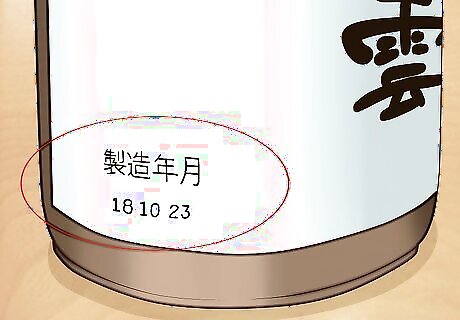
Check the date. Sake is generally best within a year of its production. Look for the bottling or shipping date on the bottle. Some sake is aged intentionally, but this is rare. In general, sake does not age well and freshest is best.
Choosing a Type of Sake
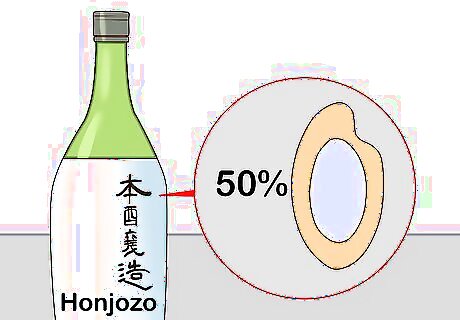
Select a grade. Grade consists of the rice milling rate of sake, or how much the rice is polished down. Polishing removes the outer layer of the rice, and with it, more unwanted flavors. The more polished down the rice, the more the flavor tends to be clean, light and delicate. Daiginjo is premium sake that uses rice polished down to 50% or less; it has a light and fragrant taste. The top 4 grades of sake are collectively called Ginjo-shu.
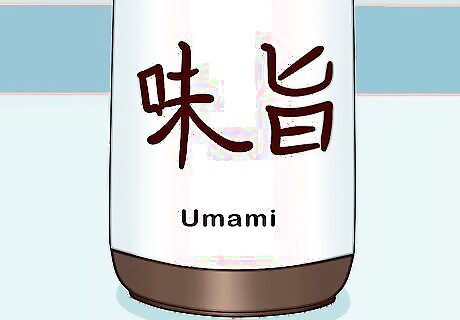
Try umami sake if you want a strong, full-bodied flavor. Umami is an added flavor. Sake with umami pairs well with fish, salad, and fresh vegetables. More delicate sakes tend to pair better with light, simple food, and full-bodied tends to pair well with heavier fare.
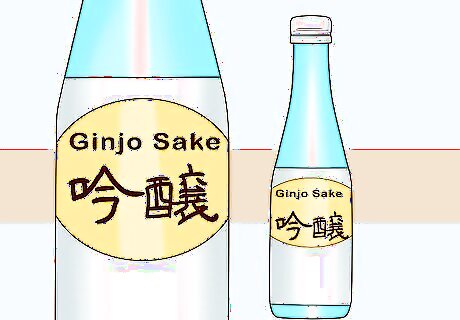
Try Ginjo sake for a fruity flavor. Ginjo-ka refers to the fruity aroma in sake. Junmai sake is non-fruity. Ginjo sakes are fermented at lower temperatures and have a light fragrance.
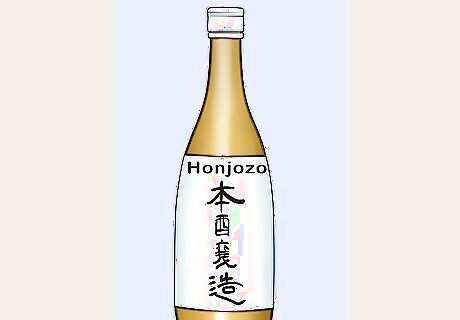
Choose light-bodied sakes for a cleaner flavor. Light-bodied beverages are less thick and have a consistency more similar to water. Honjozo sakes, for example, are light-bodied.
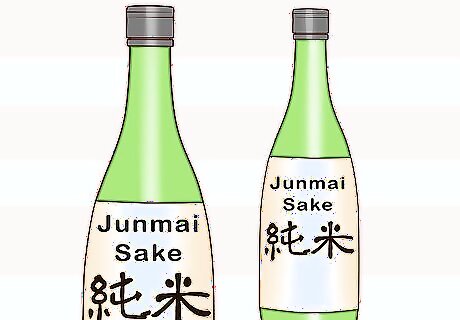
Select Junmai sakes for a longer aftertaste. Junmai sake is mild, dry, and known for its smooth aftertaste. To the contrary, added alcohol sakes have shorter aftertaste.
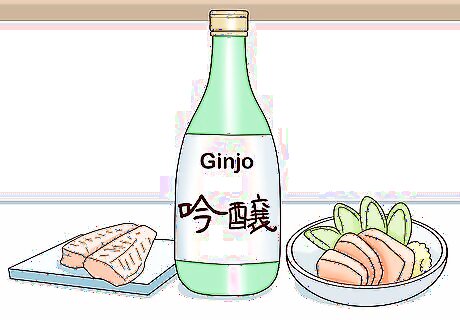
Don’t feel bound to rules about pairing sake with food. There is a Japanese proverb that says “Sake doesn’t get into fights with food.” Pairing sake with food relies heavily on your preferences. If you want some direction, selecting sake is similar to selecting what type of wine you like.
Getting to Know the Brewing Method
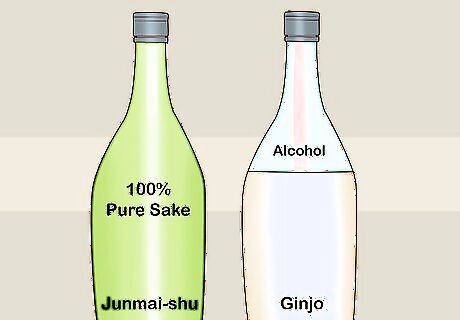
Learn about added alcohol. A small amount of distilled alcohol results in a light, dry, aromatic consistency. Distilled alcohol is added in the brewing process to “non-junmai” premium sakes. Because adding alcohol also dilutes taste, some sakes will also include seasonings such as sweeteners or amino acids. Premium sake, however, does not use seasoning. Junmai-shu is pure rice wine with no added distilled alcohol. “Ginjo” or “Daiginjo” on the bottle means that distilled alcohol was added. However, “Junmai Ginjo” or “Junmai Daiginjo” means no distilled alcohol was added.
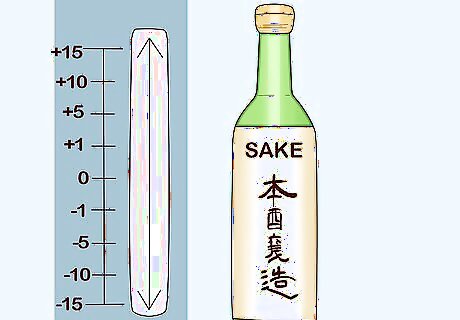
Check the Sake Meter Value. This refers to the density of sake. Generally, the higher the number, the drier the sake tends to be. Soft water with low mineral content results in sweet sake, whereas hard water with high mineral content makes drier sake.
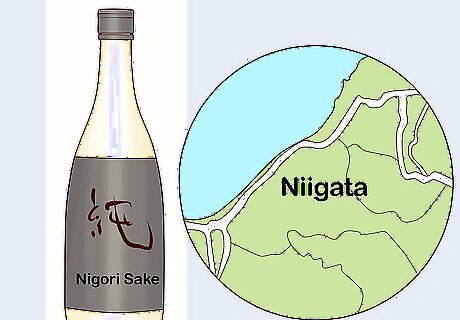
Recognize nuances in regions. Sake type is a weightier factor than region, however where sakes originate can still play a role in the flavor. Just as with grapes for wine, there are many strains of rice used to make sake, and these strains flourish differently in different climates. Sakes coming from colder climates like northern Japan tend to be drier and more delicate. For instance, Nigori sake from the snowy region of Niigata, is dry and gentle. Sakes from southern Japan usually taste a little richer and bolder. For example, Junmai ginjo, from the south (Hiroshima), can be sweeter and more complex, with a multitude of savory notes.
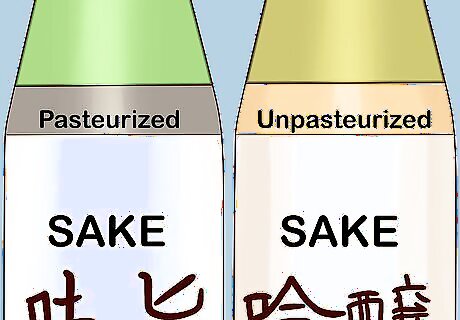
Choose pasteurized or unpasteurized. Normal sake is pasteurized twice, ages more slowly, and has a more subtle, softer flavor. Unpasteurized sake, known as Namazake, is usually fresher and more aromatic than pasteurized sake. It is also referred to as Nama Sake or “fresh sake.”




















Comments
0 comment